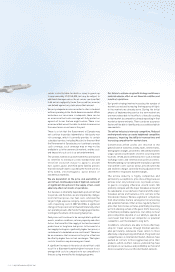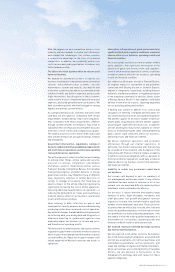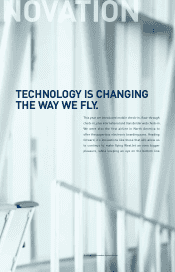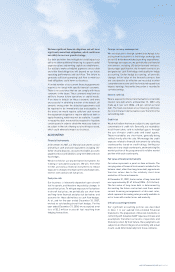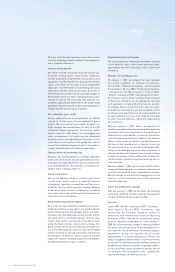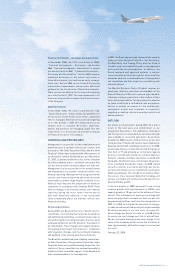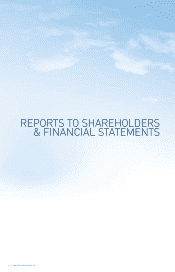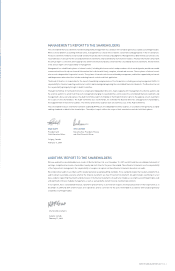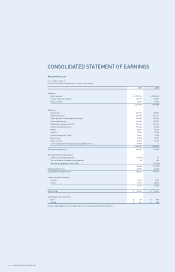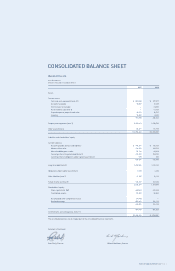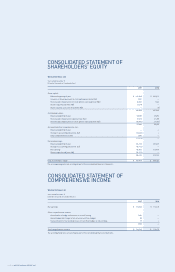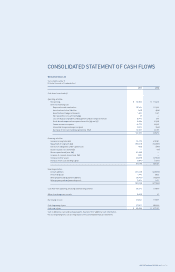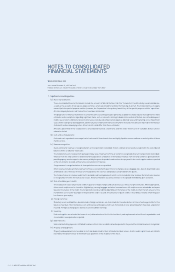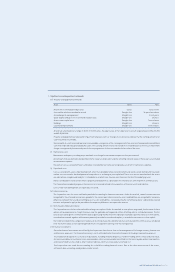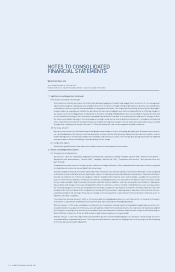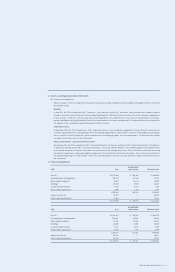Westjet 2007 Annual Report Download - page 41
Download and view the complete annual report
Please find page 41 of the 2007 Westjet annual report below. You can navigate through the pages in the report by either clicking on the pages listed below, or by using the keyword search tool below to find specific information within the annual report.
WESTJET ANNUAL REPORT 2007 PAGE 39
Financial instruments – disclosure and presentation
In December 2006, the CICA issued Section 3862,
“Financial Instruments – Disclosure” and Section
3863, “Financial Instruments – Presentation” to replace
the existing Section 3861, “Financial Instruments –
Disclosure and Presentation.” Section 3862 requires
enhanced disclosure on the nature and extent of
fi nancial instrument risks and how an entity manages
those risks. Section 3863 carries forward the existing
presentation requirements and provides additional
guidance for the classifi cation of fi nancial instruments.
These sections are effective for fi scal periods beginning
on or after October 1, 2007. This new requirement is for
disclosure only and will not impact the fi nancial results
of the Company.
Capital disclosures
In December 2006, the CICA issued Section 1535,
“Capital Disclosures,” which establishes guidelines for
the disclosure of information on an entity’s capital and
how it is managed. Effective for fi scal periods beginning
on or after October 1, 2007, this enhanced disclosure
enables users to evaluate the entity’s objectives,
policies and processes for managing capital. This new
requirement is for disclosure only and will not impact
the fi nancial results of the Company.
CONTROLS AND PROCEDURES
Management is responsible for the establishment and
maintenance of a system of disclosure controls and
procedures. The Chief Executive Offi cer and the Chief
Financial Offi cer have evaluated the effectiveness of
our disclosure controls and procedures as of December
31, 2007, as defi ned under the rules of the Canadian
Securities Administrators, and have concluded that
our disclosure controls and procedures are effective.
Management is also responsible for the establishment
and maintenance of a system of internal controls over
fi nancial reporting. Management has designed internal
controls over fi nancial reporting effectively to provide
reasonable assurance regarding the reliability of our
fi nancial reporting and the preparation of fi nancial
statements in accordance with Canadian GAAP. There
were no changes in our internal controls over fi nancial
reporting during the most recent interim period
that have materially affected, or are reasonably
likely to materially affect, our internal controls over
fi nancial reporting.
Corporate governance
During 2007, the Board of Directors (“Board”) and its
committees, most notably the Corporate Governance
and Nominating Committee, continued to take steps to
ensure that good corporate governance practices were
employed by WestJet and the Board for the benefi t of
all stakeholders. These changes were largely related to
the ongoing monitoring of "best practices,” compliance
with regulatory changes, and the continued reviewing
and updating of the existing governance materials.
The Board has established three standing committees:
an Audit Committee, a Compensation Committee, and a
Corporate Governance and Nominating Committee. The
charters of these committees are reviewed annually by
the Board. Each committee reports to the Board with
their recommendations for fi nal approval.
In 2007, the Board approved and implemented a majority
voting policy for election of directors. Our Disclosure,
Confi dentiality and Trading Policy and our Code of
Conduct were also updated based on management
and committee recommendations. In addition, the
Board reviewed and approved updates to various
senior executive position descriptions and committee
mandates based on recommendations of management
and committees and their respective consultation with
external advisors.
The WestJet Business Code of Conduct requires all
employees, directors, executives and members of the
Board of Directors of WestJet to observe high standards
of business and personal ethics in the conduct of their
duties and responsibilities. To help achieve this objective
we have established a confi dential and anonymous
hotline to provide an avenue for the confidential,
anonymous receipt and treatment of complaints
regarding accounting, internal accounting controls and
auditing matters.
OUTLOOK
Our fi nancial achievements during 2007 are a direct
result of the hard work and commitment of our
exceptional WestJetters. The dedication, motivation
and strong vision of our people have carried us through
over a decade of successful operations. As we move
forward into 2008, we will continue to focus on our four
strategic pillars: People and Culture, Guest Experience,
Revenue and Growth, and Margin and Costs. In 2008,
we will take delivery of seven new aircraft bringing our
total fl eet to 77 and allowing us to increase capacity
by 16 per cent. We will continue to commercialize our
domestic schedule, introduce new routes as we did with
the Quebec City/Toronto route, and increase frequencies
of our scheduled transborder routes. As 2008 started
out with economic uncertainty and high fuel prices,
our focus will remain on cost containment, particularly
CASM excluding fuel. The strength of our balance sheet,
the success of our seasonal deployment strategy, and
our low-cost model will continue to be the basis for our
future profi table growth.
In the fi rst quarter of 2008, we expect to see strong
revenue growth with improvements in RASM, and
capacity growth of 18 per cent on the delivery of three
aircraft. The continued cost pressure from high fuel
prices are expected to increase our fuel cost per litre
by approximately 24 per cent from the same quarter in
2007. For 2008, we estimate the sensitivity to changes
in crude oil and aircraft fuel pricing to be approximately
$5 million annually to our fuel costs for every US-
dollar change per barrel of crude oil, and $8 million
for every one-cent change per litre of aircraft fuel.
We also estimate that every one-cent change in the
value of the Canadian dollar versus the US dollar to
have, approximately, a $4 million impact on our annual
fuel costs.
February 22, 2008



